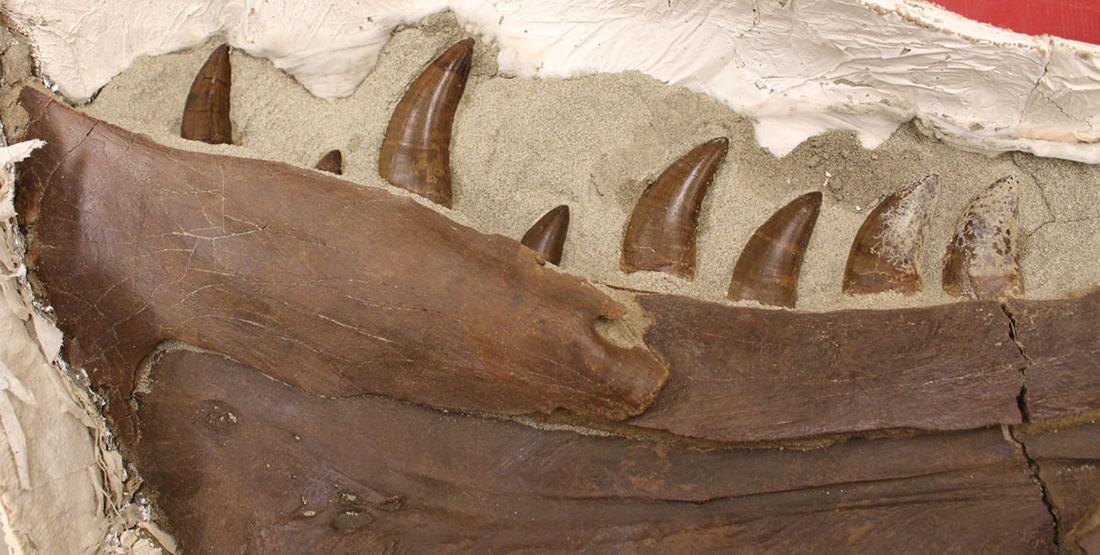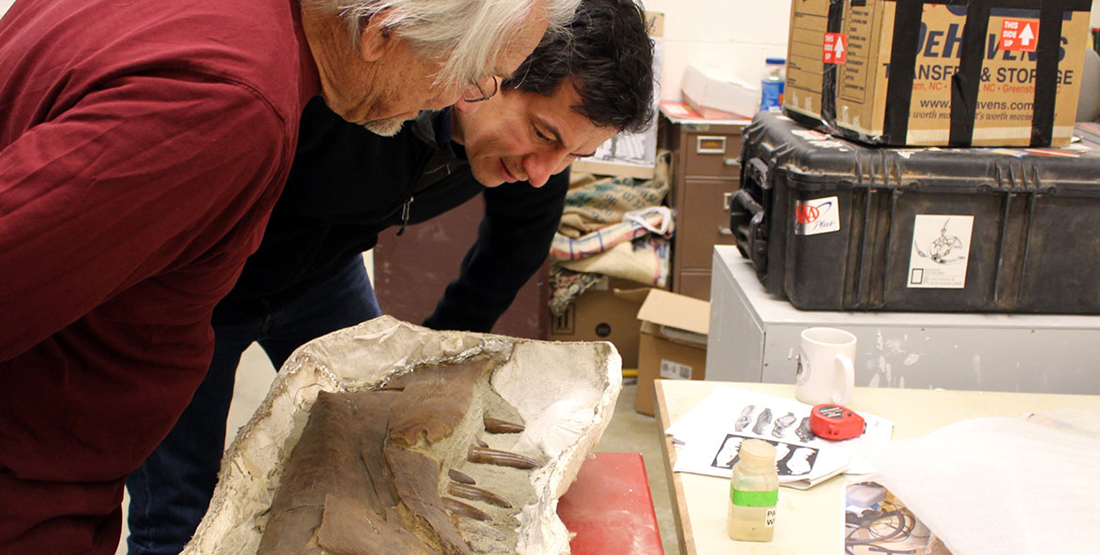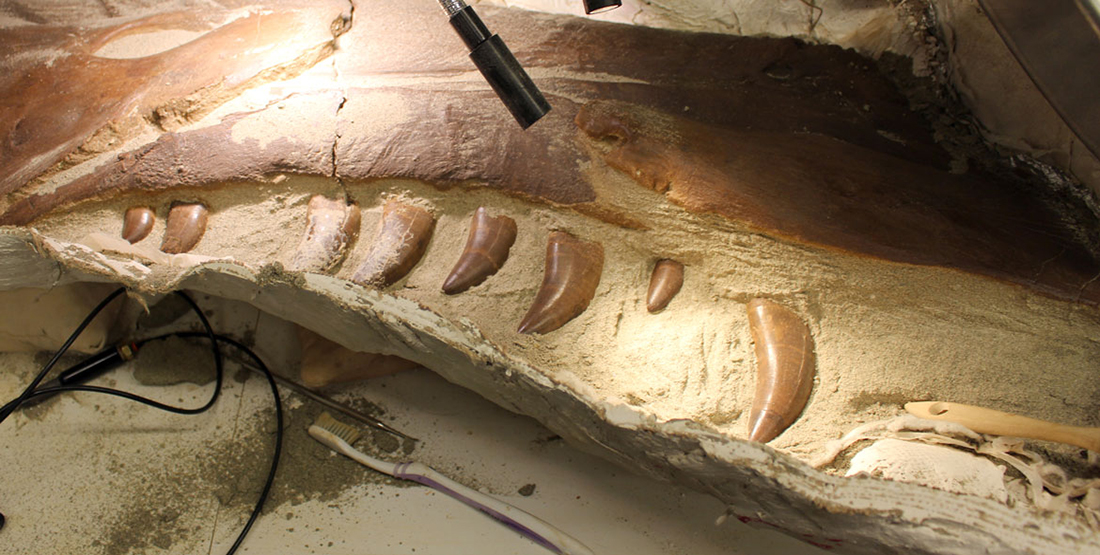Unlike our human jawbone, the T. rex jaw is made up of several bones. This 3-foot portion of the lower jaw is approximately two-thirds of the animal’s total jaw, which would likely have been four-feet long.
The team hasn’t yet started to prepare the massive 3,000-pound T. rex skull and plaster field jacket that was on display in our lobby earlier this year (more on that in a minute). Instead, they began preparing these smaller fossils first to see the condition of the bone and to get a feel for how easy or difficult it is to remove the sandstone surrounding it.
At this point, there are ten teeth visible in the jaw, but there’s a chance that they might find more as they continue to remove sandstone.
Reptiles lose and replace teeth constantly throughout their life. When they lose one tooth, another comes in behind it. Notice in the photo above that there are teeth at various heights or stages of replacement.
Overall, the T. rex fossils appear to be incredibly well preserved, much to the delight of our paleontology team. There is one large crack through the lower jaw and a tooth where the roots of modern plants pushed through the fossil causing damage, but otherwise there are only a few minor surface cracks.
“We couldn’t ask for better preservation,” said Greg Wilson, adjunct curator of vertebrate paleontology at the Burke Museum. “It’s been amazing to come in day-to-day and see this specimen come into view.”
The preparation process (so far)
Preparation on the jaw is nearly 90% complete at this point, largely thanks to the help of two volunteers—Gary Livingston and Jean Primozich. The team worked on the lower jaw in shifts over the past several weeks, spending more than 100 total hours removing sandstone from the fossil.
It is common to have some minor surface loss when chipping away hard rock from fossilized bones, but that hasn’t been the case with this specimen. “The sand would just pop loose,” Gary said while describing the preparation process.
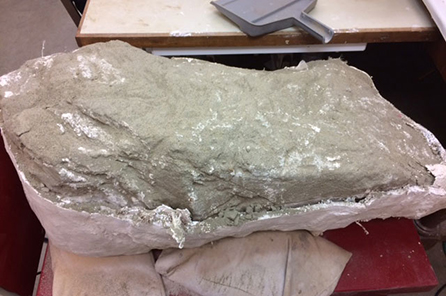
The block of sandstone at the beginning of the preparation process.
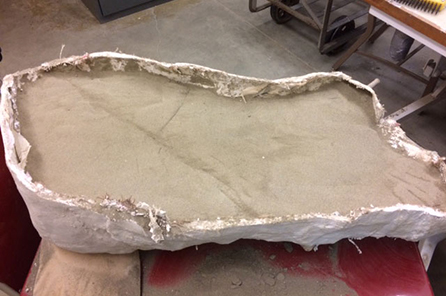
Progress after removing numerous layers of sandstone, but still no visible bone!
After opening the field jacket, Gary and Jean used a wire brush to scrape away the sand. Once bone started to come into view, they switched to tools designed for more detailed work, such as an air scribe (basically a miniature jackhammer for fossil preparation) and small brushes—even a toothbrush!
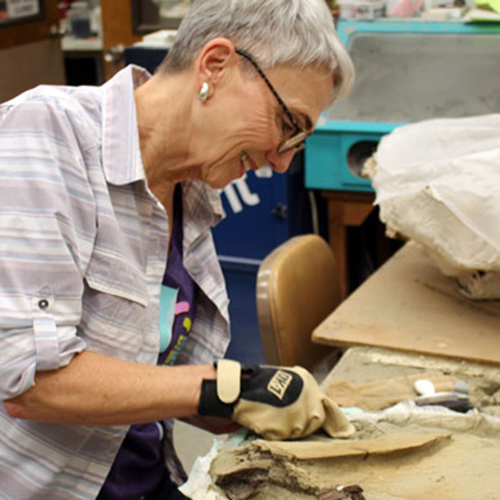
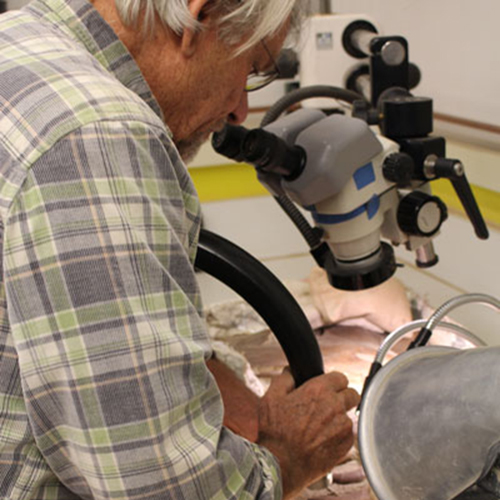
Volunteer Gary Livingston working on the T. rex lower jaw.
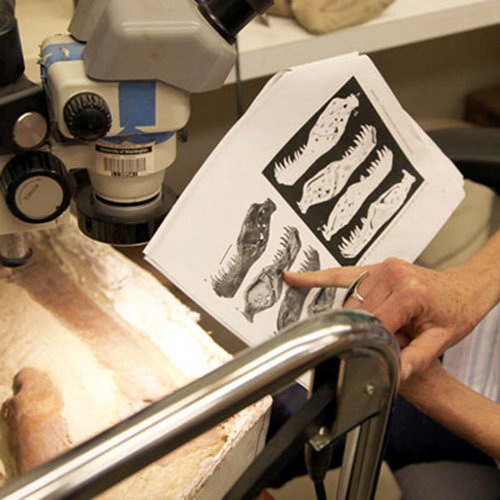
Jean Primozich points to a T. rex lower jaw illustration while preparing the specimen in early November.
Next up: More T. rex
Later this week, the team will carefully flip the lower jaw over to finish removing sandstone from the other side. (Hint: You can see the complete lower jaw in person at the Burke’s Dino Weekend, March 11–12, 2017!)
Starting with the lower jaw of the T. rex has given the paleontology team a valuable opportunity to practice on something smaller before turning their attention to several larger specimens, including the T. rex ribs and the massive skull. The relatively easy removal of the sandstone is a welcome sign for what’s to come!
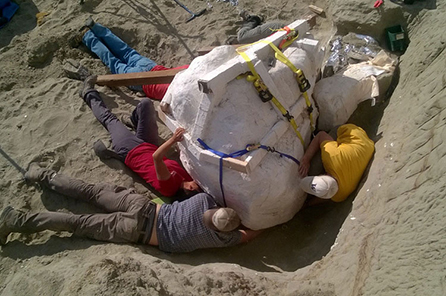
Paleontologists prepare to remove the T. rex skull from the dig site in northern Montana and transport it to the Burke Museum.
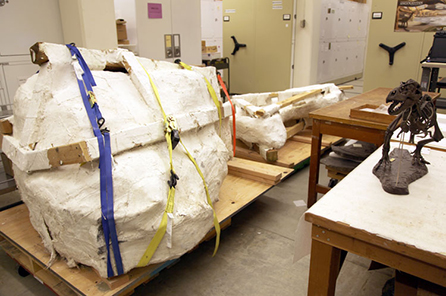
The T. rex skull and ribs in their plaster field jackets in the Burke Museum paleontology collections space.
Late next year, the team will start preparing the T. rex skull in the Burke’s public galleries for visitors to watch.
Once the entire skull is prepared, we plan to put it on display in New Burke Museum opening in 2019. “I think we’re all looking forward to seeing this amazing fossil on display in the New Burke Museum,” said Christian Sidor, curator of vertebrate paleontology.
---
The Tufts-Love T. rex fossil was collected with permits to research and collect on federal land managed by the Bureau of Land Management (BLM) in the Hell Creek Formation. Read more about the T. rex discovery.
See the T. rex lower jaw in person! Mark your calendars for Dino Weekend, March 11-12, 2017. Event pre-sale timed tickets are now available.
